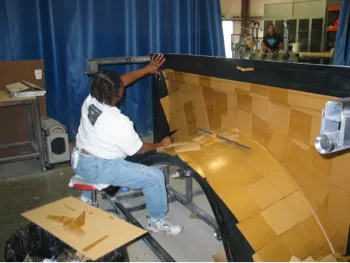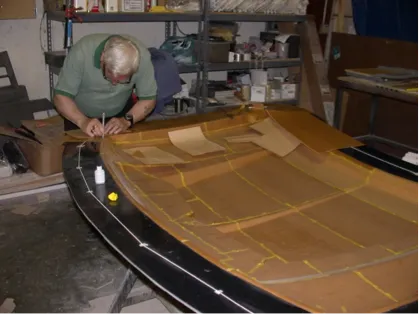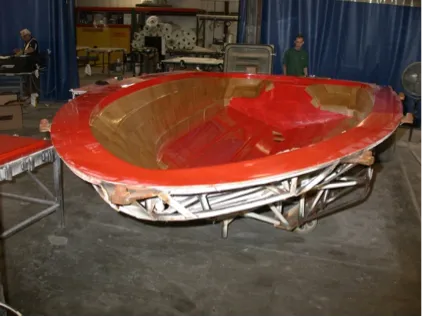The key to repeatable molding process control in a RTM or LRTM tool is to have ACCURATE cavity thickness calibration. Most obvious consideration one would normally make is to use sheetwax of the same thickness desired for the final part thickness. For instance if a 1/8” (.125”) part thickness is desire for the final part then it would be assumed that 1/8” wax be used, this however has proven NOT to provide an accurate 1/8” part thickness in the end. The reason is when the upper mold is produced, it lifts the sheetwax during the curing process and thus the part cavity is not the predicted, often the 1/8” part turns out to be between .115” to .160” as the Upper is distorted by the wax lift.
This problem plagued the closed mold builder for many years with various attempts to correct proving less than consistent results. The problem with a cavity that is not accurate has little to do with the needs of the final molded part, as often ones feel it is less than a top priority, it is critical however to controlling the resin flow path. In accurate mods produce parts with air voids and dry spots, not to mention heat shrink and cracking in radii. The solution is to build the upper mold while clamped under vacuum. This begins with the total laminate thickness wax applied in two layers with the first layer typically 1/3 the total then the final layer the remaining 2/3 of the total part thickness desired. The technique of applying the wax and then the precise method of applying vacuum during the upper mold construction is a large portion of the JHM Technologies mold building schools held in Fenton Michigan.

The first layer of wax is cut into 6” squares and applied with prescribed gaps on all four sides to create a series of vacuum channels for vacuum communication.

The top layer of wax is applied in full size 12” x 24” sheets with the seams tightly sealed.

The use of the 6” squares is consistent in both small and large molds. The results of using the proven technique taught, is high part cavity accuracy achieving very predictable resin flow without resulting in dry spots or voids in the final part moldings.
